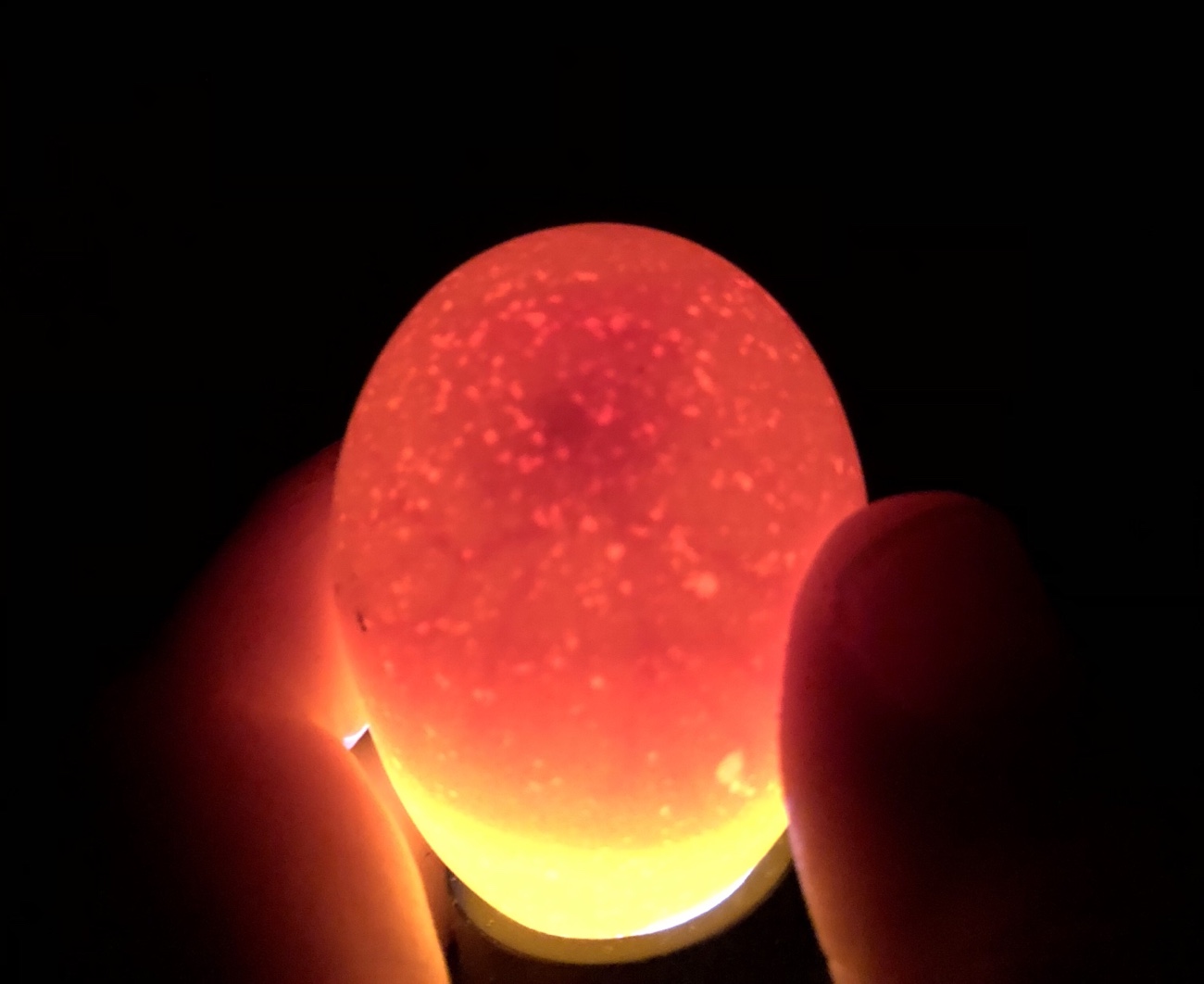
The incubators have been quiet for many months now…but no longer. With a couple dozen barnyard mix chicken eggs sitting pretty in the Brinsea, we’ll have tiny fluffballs in the brooder soon.
Since we currently have no layers, we’ve been buying local free range eggs from a small farm…and they’re super fresh and delicious. They range from tinted to tan to brown to greenish blue. Some are large, some are smaller. It’s a fun variety, and when I found out I could also get hatching eggs from this mixed flock, I had to set some.
The first candling – at 7 days – showed good development.View fascinating photos of day-by-day chick development here. See the blood vessels and the eye?

Last night, we candled a second time and only removed 1 more egg for a blood ring (one that had already been marked as questionable during the first candling). 18 eggs will go into lockdown in a few days!
Like many people, we bought our first chicks at the locally-owned farm and feed store. We’ve learned over the years that hatchery- bred production layer chicks like Rhode Island Reds can have reproductive issues later, like egg yolk peritonitis, a condition to which we lost layers.
We raised a nice group of French Black Copper Marans last year (eggs from two different breeders). Here’s what I learned about them:
- Laying: not exactly prolific layers to begin with, they also ceased laying if the weather was too hot or too cold. Finicky.
- Free ranging: the two different groups of FBCM we had didn’t seem as alert to predators as some of our other breeds. Definitely a problem in a fox and hawk-heavy area.
- Egg color: our FBCM hens’ eggs were strikingly dark. The color ranged from deep chocolate to dark red-brown. The drawback is that there seems to be an inverse relationship between egg darkness and number of eggs laid: hens that lay very dark eggs lay fewer.
- Popularity: everybody wants them but some seem to think they should be the same price as the hatchery chicks at feed/farm stores. One individual even took it upon himself to send me an email advising me that he had seen chicks of this breed at a farm store for $3 – implying that I should price mine similarly. I happen to know that the specific store he mentioned doesn’t carry FBCM, though they do offer other Marans varieties, like Cuckoo. It must have helped that he wished me luck in selling the chicks I had posted, though, because I sold out the next day.
- We also hatched a group of Cream Legbars – blue layers – but rehomed them prior to point of lay. Though they were lovely birds in both appearance and temperament, the eggs they hatched from definitely had a green tint (as do most that I’ve seen); I’ve since found threads that suggest that this coloration may be due to the Rees lines influence. I’m keeping my eyes peeled for CL eggs from Greenfire Farm A&B lines to add some blue layers to the flock.
Some of the other breeds are on the short list: Silverudd’s Blues (formerly called “Swedish Isbars”), Ameraucanas, Ice Cream Bars (Isbar/Cream Legbar crosses), Olive Eggers…but that’s for future hatches. I have several mature FBCM roosters from last year’s hatches that will become flock roosters and pass their dark egg genes on, so I’ll be expecting second generation hens to lay darker eggs than their mothers did. In addition, having FBCM roosters over Olive Eggers would intensify the OE egg color. The possibilities are exciting! Learn more about egg color genetics here.
But I’m getting ahead of myself – these first generation chicks have yet to hatch. This could turn out to be a very busy spring! 🐣
Trying to decide which incubator to buy? Check out our post with our unbiased review of the ones we’ve used. And we’ll be posting a future review of our newest addition – a circulated air incubator that can be switched to still air during hatching!

Comments are closed.